Decorating
How Should I Decorate a South-facing Room?
Follow this expert advice to help you handle direct sunlight and the strong contrast between brightness and shade
South-facing rooms are naturally dazzling, but full-on direct sunlight can drain the colour from the richest of decorating schemes and highlight every flaw. The key, say our experts, is to filter out the glare without dampening the drama of these lovely spaces.
Professional advice from: Philippa Richard of Ace Your Space; Elizabeth Bee of Elizabeth Bee Interior Design; Claire Armstrong-Gautier of My Bespoke Room
Professional advice from: Philippa Richard of Ace Your Space; Elizabeth Bee of Elizabeth Bee Interior Design; Claire Armstrong-Gautier of My Bespoke Room
How does it affect the mood of the space?
“South-facing rooms will feel more dramatic naturally because of the sharp contrast between light and shade,” Philippa says. “If you want a calm feel, you’ll need to combine colours and textures that blend in order to reduce the level of contrast.
“South-facing windows attract heat energy as well as light, so some form of solar control will be necessary in summer to prevent overheating.” In terms of decorating, she says, “It pays to make south-facing rooms warmer and more dramatic.”
“South-facing rooms will feel more dramatic naturally because of the sharp contrast between light and shade,” Philippa says. “If you want a calm feel, you’ll need to combine colours and textures that blend in order to reduce the level of contrast.
“South-facing windows attract heat energy as well as light, so some form of solar control will be necessary in summer to prevent overheating.” In terms of decorating, she says, “It pays to make south-facing rooms warmer and more dramatic.”
What happens to paint colours in a south-facing room?
“The optimum light for showing colours in their true form is a slightly grey day,” Philippa says. “Bright light, such as that in a south-facing room, tends to wash out colours, both in perception and actuality.
“Stronger, brighter colours look vibrant rather than garish. If you love reds and oranges, these can work well in a south-facing space (although west-facing is better),” she says. “South-facing rooms can also handle darker colours well because the light is so intense.”
“The optimum light for showing colours in their true form is a slightly grey day,” Philippa says. “Bright light, such as that in a south-facing room, tends to wash out colours, both in perception and actuality.
“Stronger, brighter colours look vibrant rather than garish. If you love reds and oranges, these can work well in a south-facing space (although west-facing is better),” she says. “South-facing rooms can also handle darker colours well because the light is so intense.”
How should I use artificial light?
“Although south-facing rooms tend to be the brightest in a house, you still need to consider suitable lighting for all times of the day,” Elizabeth Bee says. “It’s important to have soft lighting, such as table lamps and wall lights, that can be used on a dark day and in the evening to create a cosy feel.
“These can create a feeling of light and warmth on even the most miserable of days,” Elizabeth adds. “It also gives you the opportunity to create an inviting mood for the evenings by illuminating corners of the room or individual features.”
“Although south-facing rooms tend to be the brightest in a house, you still need to consider suitable lighting for all times of the day,” Elizabeth Bee says. “It’s important to have soft lighting, such as table lamps and wall lights, that can be used on a dark day and in the evening to create a cosy feel.
“These can create a feeling of light and warmth on even the most miserable of days,” Elizabeth adds. “It also gives you the opportunity to create an inviting mood for the evenings by illuminating corners of the room or individual features.”
How do I control glare without blocking views?
In bedrooms, often the only option is a blackout window dressing, Claire Armstrong-Gautier says. “My favourite combination is a blackout blind and curtains. This brings a soft and elegant feeling to the room, while ensuring you receive as little unwanted light as possible,” she says.
“If you need extra privacy, go for a double curtain rail with a sheer voile at the back and blackout curtains over the top,” she suggests. “The voile will help with privacy while letting light through. When it’s time to sleep, simply let the blackout curtains do their job.”
In bedrooms, often the only option is a blackout window dressing, Claire Armstrong-Gautier says. “My favourite combination is a blackout blind and curtains. This brings a soft and elegant feeling to the room, while ensuring you receive as little unwanted light as possible,” she says.
“If you need extra privacy, go for a double curtain rail with a sheer voile at the back and blackout curtains over the top,” she suggests. “The voile will help with privacy while letting light through. When it’s time to sleep, simply let the blackout curtains do their job.”
“If you don’t like curtains, just have a blackout Roman blind,” Elizabeth says. “When measuring for a Roman blind, add a little to the width to ensure as little light as possible comes in at the edges.
“Sheer roller blinds are great for diffusing sunlight without shutting it out completely,” she continues. “There are lots of different opacities and colours available with UV ratings that will help to protect furniture and antiques.”
“Sheer roller blinds are great for diffusing sunlight without shutting it out completely,” she continues. “There are lots of different opacities and colours available with UV ratings that will help to protect furniture and antiques.”
How do I manage light levels in a highly glazed space, such as a kitchen-diner?
If you’re planning a new kitchen extension or considering replacing windows or doors, look for glazing with built-in blinds.“It’s a sleek solution, but it does come at a price,” Claire says.
“Alternatively, roller blinds are neat in kitchen spaces and they can be mechanised, so you can open and close them at the touch of a button,” she says. Blinds are particularly important for rooflights, where the space below will need shading from sunlight directly overhead.
Check out this essential guide to planning a glass extension for more on shading overhead glazing.
If you’re planning a new kitchen extension or considering replacing windows or doors, look for glazing with built-in blinds.“It’s a sleek solution, but it does come at a price,” Claire says.
“Alternatively, roller blinds are neat in kitchen spaces and they can be mechanised, so you can open and close them at the touch of a button,” she says. Blinds are particularly important for rooflights, where the space below will need shading from sunlight directly overhead.
Check out this essential guide to planning a glass extension for more on shading overhead glazing.
“Bear in mind that, while positioning a dining table under a rooflight might make sense during daylight hours, there will be nowhere to hang a pendant light for evening illumination. Positioning a dining area to one side of a rooflight will help solve the issue,” Claire says.
How does direct light affect the layout of reception rooms?
“The trick in these rooms is managing the light,” Claire says, “and window dressing is key. In a living room, track the path of the sun before pinning down a layout. It will be crucial for positioning your TV.” You won’t want to close curtains or pull down blinds during the day unless you have to.
“South-facing reception rooms often have a view out to the garden, which will draw the eye,” Elizabeth says. “If you have a nice view, create a seating area in a sunny spot so you can sit and look out.”
“The trick in these rooms is managing the light,” Claire says, “and window dressing is key. In a living room, track the path of the sun before pinning down a layout. It will be crucial for positioning your TV.” You won’t want to close curtains or pull down blinds during the day unless you have to.
“South-facing reception rooms often have a view out to the garden, which will draw the eye,” Elizabeth says. “If you have a nice view, create a seating area in a sunny spot so you can sit and look out.”
What about home offices?
You should take as much care to position a desktop computer in a home office as the TV in a living space. “Work the layout to ensure the sunlight falls over your screen as little as possible,” Claire says, “but without putting yourself in the glaring light instead.”
If you have a sunny panorama, try to position yourself so you can take advantage of it. “A nice view boosts productivity and is good for the soul, but having a blind that you can partially lower if necessary will make the room usable around the clock,” Claire says.
You should take as much care to position a desktop computer in a home office as the TV in a living space. “Work the layout to ensure the sunlight falls over your screen as little as possible,” Claire says, “but without putting yourself in the glaring light instead.”
If you have a sunny panorama, try to position yourself so you can take advantage of it. “A nice view boosts productivity and is good for the soul, but having a blind that you can partially lower if necessary will make the room usable around the clock,” Claire says.
What about bedrooms?
“The best thing about a south-facing bedroom is the great natural light for a dressing table,” Claire says. “The closer to the window you can get it the better.”
For children’s rooms, Claire suggests adding a canopy to the bed. “It will help filter the extra light while adding a snug and playful feel,” she says.
Tell us…
How have you tackled the design challenges of a south-facing room? Share your experiences in the Comments section.
“The best thing about a south-facing bedroom is the great natural light for a dressing table,” Claire says. “The closer to the window you can get it the better.”
For children’s rooms, Claire suggests adding a canopy to the bed. “It will help filter the extra light while adding a snug and playful feel,” she says.
Tell us…
How have you tackled the design challenges of a south-facing room? Share your experiences in the Comments section.


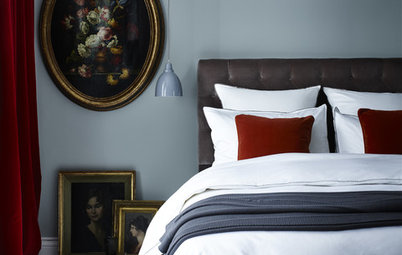
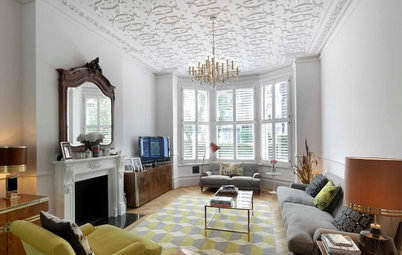
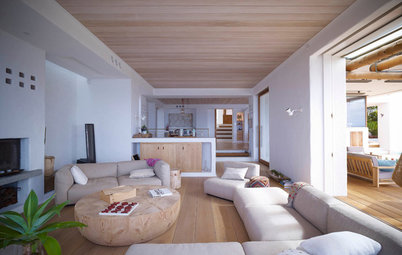
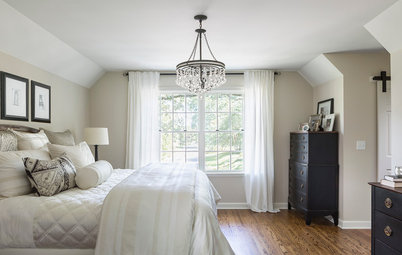
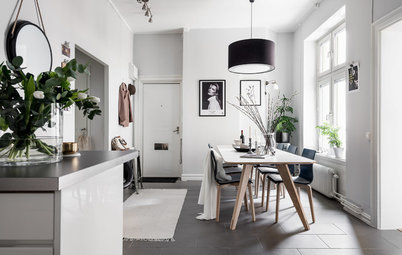
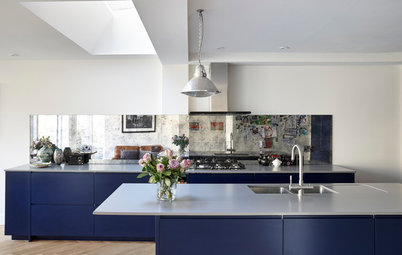
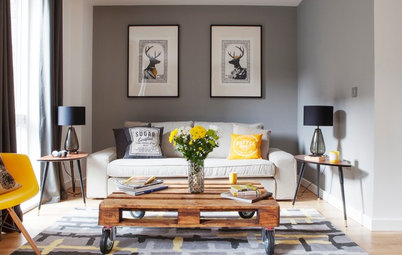
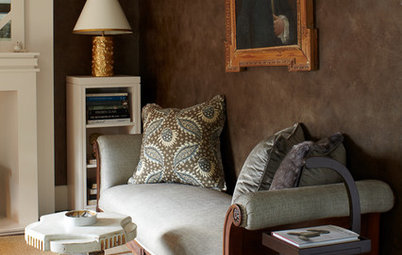
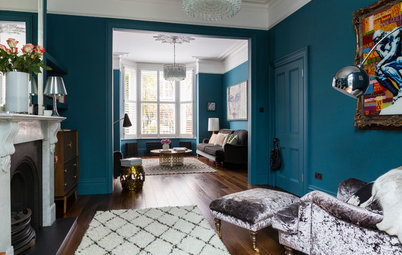
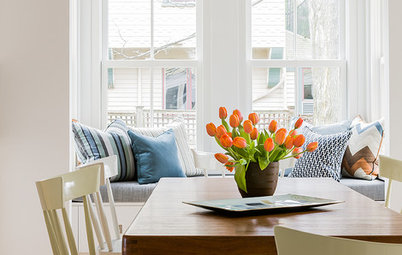
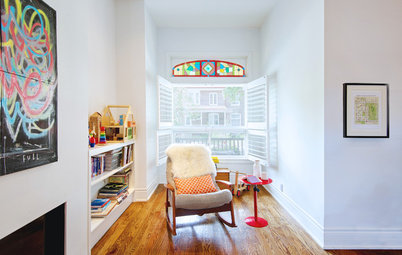
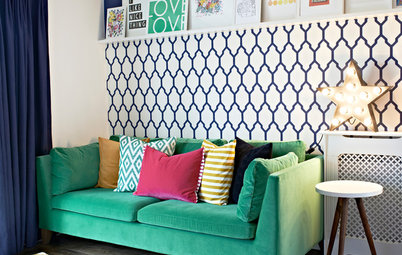
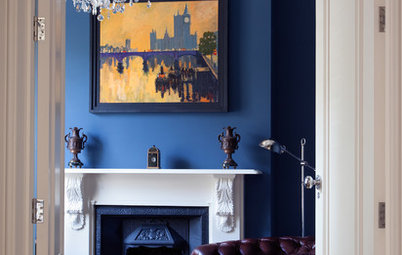
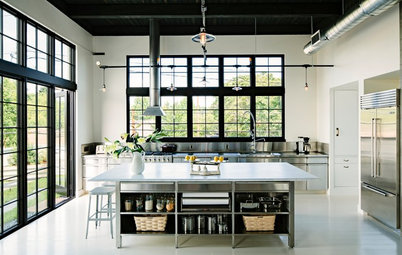
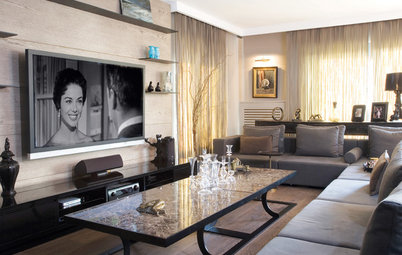

“South-facing rooms receive direct light,” Philippa Richard says, “even if that’s been filtered by cloud. The space will have different light throughout the day, because the quality of light changes.
“In the morning, it’s mainly yellow/green; at noon it’s blue, and by late afternoon the warm reds and oranges predominate. The direct light from the south means that, when the sun is shining, you can get lots of light and shade.”